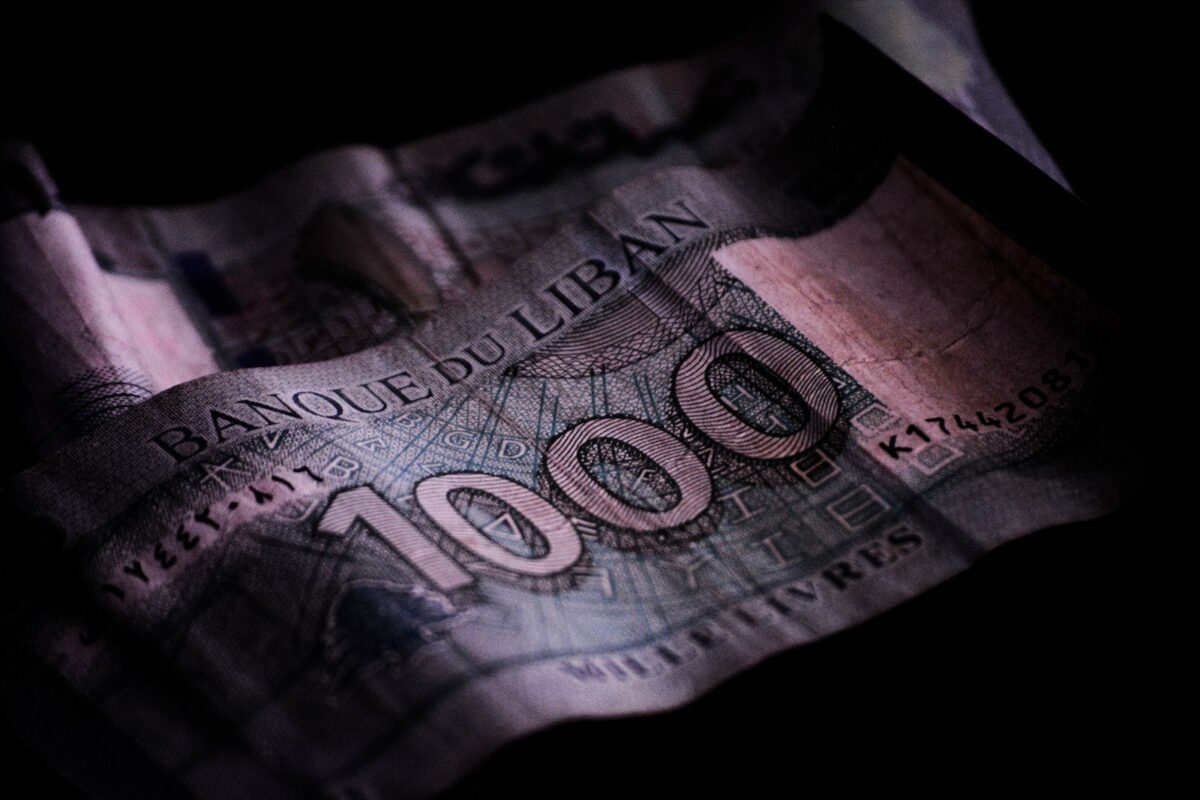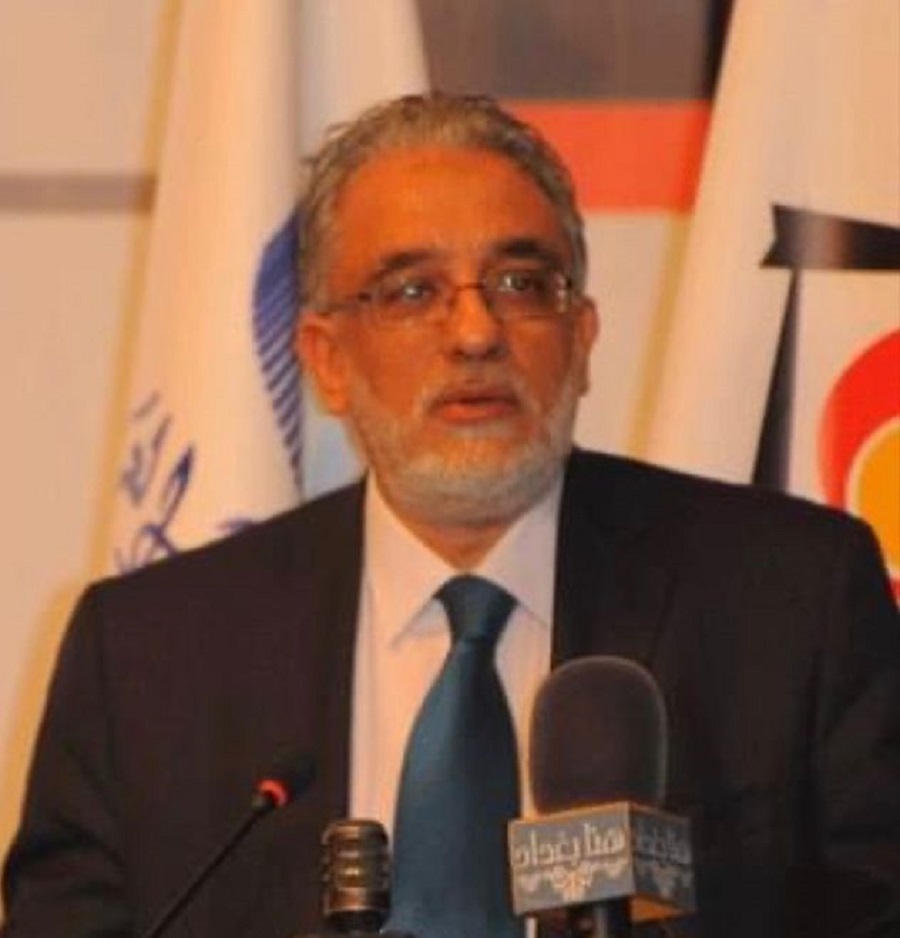
BDL sends weak market signals eroding more confidence
Has the Lebanese pound become a virtually meaningless piece of paper that does not perform any of a currency’s functions?
A recent report by Standard and Poors (SandP) warns of market deterioration risk and waved implicitly at a new depreciation of the Lebanese pound (LBP) in the making.
The loss of confidence in the national currency is reflected by the craving for dollars on the market. “Dollar addiction”, is now pushing the economy towards rampant dollarization ( now at 98.95%) , with a disastrous socio-economic cost.
Lebanon remains mired in a prolonged political deadlock, which continues to dampen economic activity. The country also faces significant security risks. Regional geopolitical tensions have escalated since the onset of the Israel-Hamas war in October 2023.
On the backdrop of this, serious concerns have been raised lately on the strength of the Lebanese pound knowing that a currency’s strength is determined by the interaction of a variety of local and international factors such as the demand and supply in the foreign exchange markets; the interest rates of the central bank; the inflation and growth in the domestic economy; and the country’s balance of trade.
It has been a long time since the Lebanese people understood the true value of their currency. Currently, there are at least four vastly different exchange rates at which the LBP is converted into U.S. dollars (USD). This has resulted in a daily struggle marked by misery and absurdity.
The issue has raised concern that Lebanon while experiencing more of the same monetary policy, the Banque Du Liban (BDL) has failed in bringing out confidence, stability and growth to the markets.
As the central bank no longer has the possibility to print money to finance government deficits, Lebanon like any hard pegs constrained country is caught between a rock and a hard place. For the system to work, Lebanon, a country that imports 80 per cent of its goods, need to find a stable inflow of dollars. To be noted that the BDL balance sheet conveys some $128.91 million (0.83%) expansion in BDL’s foreign assets portfolio during the first half of August 2024 to $15.58 billion (LBP 1,394.06 trillion). The liquid foreign reserve assets of the Central Bank, when factoring out the face value of the ROL Eurobonds portfolio held by BDL amounting to circa $5.21 billion, stood at $10.39 billion as at mid-August 2024, up from $10.26 billion a fortnight earlier. Similarly, the value of gold reserves at BDL increased by 2.16% ($482.79 million) in the first half of August to $22.79 billion (LBP 2,040.14 trillion) as better than expected U.S. job data eased recession fears sending gold prices higher.
Market deterioration fears
A year after the pound’s official devaluation to LPB 15,000 per dollar, Lebanon’s limited ability to borrow effectively constrains spending, underpinning small fiscal deficits in fiscal forecasts through 2027, the SandP report quoted. The BDL unified the official exchange rate in February 2024, it has remained stable at around Lbp89,500 per dollar since then. The rating agency acknowledges that its analysis is based on flawed data, primarily due to a lack of human resources at the Finance Ministry and the numerous exchange rates used throughout the five-year crisis. This issue was a key factor in Fitch’s decision to suspend ratings for Lebanon until further notice. S&P describes the data as “subject to exceptionally high uncertainty, which is likely to persist for the foreseeable future,” but notes that the government is working with the IMF to address these issues.
In a statement issued alongside the report, the caretaker Finance Minister said the ministry had done everything possible under the current circumstances to allow S&P “to assess the situation and provide a rating that accurately reflects the state of the country’s public finances, currency, and economy.” He also acknowledged that this effort had not been extended to Fitch and noted that his teams had met multiple times with S&P experts before the report’s publication.
To underline also that the 2024 budget is based on the new exchange rate, which appears close to the parallel market rate, higher receipts from currency valuation changes, such as for customs taxes and airport fees, will support government revenue, SandP noted. On the plus side the government recorded a small surplus (on a cash basis) for first-half 2024, however, resumption of foreign bilateral and multilateral concessional debt servicing and adjustment to the public sector payroll through social allowances will keep expenditure higher than 2023, leading to project a balanced budget for 2024. The same report forecasted a fiscal deficit of average 0.2% of GDP over next three years. The report added that funding constraints will continue, with only minimal funding from public pension funds. Since mid-2022, the BdL has not participated in government debt auctions.
On the negative side, Lebanon’s debt-to-GDP ratios have been markedly affected by the sharp currency depreciation, which increased the local currency value of foreign currency debt. It is estimated that general government debt at approximately 210% of GDP in 2024, up from about 160% in 2019. Foreign currency debt constituted 40% of total debt in 2019, which increased to about 97% in 2024 if calculated based on the newly adopted exchange rate. After stopping debt coupon payments to the BdL in 2021 the government has started servicing 2024 coupon payments and the arrears collected from 2021-2023 will be repaid from 2025. As a result, we forecast the government’s interest spending to stay above 10% of government revenue from 2024-2027. SandP sovereign ratings reflect the government’s ability and willingness to service financial obligations to nonofficial (commercial) creditors. It considers the BdL a noncommercial creditor and therefore do not view this previous nonpayment to the BdL as a local currency default.
Interestingly enough the report noted that after an average current account deficit (CAD) of USD 6.5 billion over 2022-2023, it also forecasted an average annual deficit of USD 4.5 billion in 2024-2027. Absent credible progress on restructuring and reforms, investor confidence has evaporated, with the officially reported CAD largely being financed by unrecorded remittances and accumulated resident savings, it said. Lebanon’s domestic bank deposit bases continue to decline. Total customer deposits (resident and non-resident) in the Lebanese banking system fell to about USD 90 billion on May 31, 2024, from USD168 billion at year- end 2017. At the same time, due to a lack of confidence, the conversion of Lebanese pound deposits into foreign currency ones has led to an increase in deposit dollarization beyond 98%.
Lebanon is still mired in a series of crises, including a severe economic downturn with GDP plummeting by 37.3 per cent from 2018 to 2021 – among the worst the world has seen, wiping out 15 years of economic growth. In addition, the Lebanese pound has crashed since the financial meltdown in 2019, and the local currency has lost more than 95 per cent of its value since August 2019. The devaluation of the currency has led to a loss of purchasing power for the citizens of Lebanon. The minimum wage has plummeted from USD 450 to as low as USD 17 a month, and bank account balances “are just numbers on papers”.
Despite the fact that the Lebanese government has resumed coupon payments to the BdL on its local currency-denominated debt, which it had previously stopped servicing in 2021 significant progress on reforms or government debt restructuring appears unlikely in the near term, especially following the country’s default on commercial debt four years ago. The government remains current on principal payments to BdL and interest and principal payments on its local currency commercial debt obligations.
Nevertheless, the risk of default on commercial local currency-denominated debt remains elevated, due to shortcomings in the government’s administrative capacity, its limited ability to raise revenue, and uncertainty over the scope and timing of overall government debt and banking sector restructuring.
BDL fails to restore confidence
Lebanon is currently governed by a caretaker administration with limited authority, and the presidential post has been vacant since October 2022. BDL vice governor Wassim Mansouri’s strategy compelled the government, especially the Ministry of Finance (MoF), to enhance revenue collection through adjustments to VAT and customs duties, such as aligning the customs dollar rate with market exchange rates. These measures helped narrow the estimated fiscal deficit for 2023 to nearly zero. Additionally, collaborative efforts between the Banque du Liban (BDL) and the MoF contributed to the accumulation of foreign reserves, however these changes failed to give the markets any positive signals. These accomplishments were recognized during an IMF visit to Lebanon in May 2024.
However, the term “incomplete” or “fake” has been used to describe another risk factor. If Lebanon were to implement measures to discourage the cash economy, tighten transaction controls, or face international sanctions or oversight, the country would likely experience a shortage of circulating dollars, leading to significant economic strain.
Lebanon’s heavy reliance on foreign currencies limits its ability to make sovereign political decisions. The country cannot afford disruptions from powerful nations that might restrict or sanction money transfers. This dependency on foreign currencies weakens Lebanon’s capacity to make independent political choices, leaving it vulnerable to external pressures and influences.
The paradox of the Lebanese pound is its stability despite a lack of hope, trust, or demand. Economic agents routinely replace the Lebanese pound with the dollar for everyday transactions such as salaries, utilities, healthcare, education, shopping, and fuel. As a result, people have become indifferent to the pound’s stability or instability. They only pay attention and react with panic, as seen in 2020, when they are forced to use Lebanese pounds and must convert them to dollars through platforms or exchange offices.
The many rates loophole
One of the most contentious issues in Lebanon’s financial crisis has been the restrictions on bank withdrawals. Since late 2019, Lebanese banks have imposed informal capital controls, severely limiting the amount of US Dollars that account holders can withdraw. In many cases, depositors are forced to withdraw their US Dollar deposits in Lebanese Pounds at a rate far below both the black market and retail rates.
Another rate, often referred to as the “bank rate” or “haircut rate,” is another example of the multiple exchange rates in Lebanon. The bank rate is typically set by the banks in coordination with the Central Bank and is much lower than the true market value of the Lebanese Pound. This practice has led to significant losses for depositors, as they are effectively forced to accept a devalued currency in exchange for their US Dollar deposits.
The bank withdrawal rates have been a major source of public anger and have contributed to widespread protests and social unrest. Many Lebanese view these rates as a form of theft, as they are forced to take significant losses on their hard-earned savings.
In addition to the major exchange rates mentioned above, there are also various sector-specific rates that apply to different parts of the economy. For example, some sectors, such as telecommunications and energy, have their own exchange rates for billing purposes. These rates are often set by the government or the Central Bank and are intended to reflect the cost of importing goods and services in these sectors.
These sector-specific rates add another layer of complexity to the already convoluted exchange rate system in Lebanon. They create inefficiencies and distortions in the market, as businesses and consumers must navigate multiple rates for different transactions. This has led to confusion and uncertainty, making it difficult for businesses to plan and for consumers to understand the true cost of goods and services.
Market deterioration risk
Partly because of heightened security risks but also the continued domestic political paralysis, SandP expect the Lebanese economy to contract over 2024-2025 by an average 1% annually, owing to subdued investor confidence, disruptions in business activity, the impact of internally displaced people, and reduced tourism inflows. Social stability in the country remains fragile amid political fragmentation and the policy vacuum. Lebanon hosts about 1.5 million Syrian refugees, which weighs on its already-strained public finances and services.
With the continuing political and economic turmoil and the pound’s sharp depreciation since 2020, Lebanon’s economy shrank to an estimated $16 billion in 2023 from $53 billion in 2017. Similarly, it is forecasted a GDP per capita level at an estimated $3,000 in 2024 (based on the average exchange rate of LBP 90,850 per dollar) from about USD8,000 in 2017.
Since 2018, consistent deposit outflows, multilateral loan payments, and interventions through the Sayrafa platform have weighed heavily on foreign exchange (FX) reserves at the BdL. Nevertheless, the central bank has ended fiscal deficit financing and food and fuel subsidies, given the continuous drain on reserves. Gross FX reserves, including gold and excluding Eurobond holdings, stood at about $32.5 billion as of July 15, 2024, versus $52 billion at year-end 2017. This includes an estimated $10 billion of banks’ required reserves on foreign currency deposits, translating into estimated usable reserves of about $18 billion as of end-2024. The BdL holds gold reserves of about $22 billion, but these cannot be used without parliamentary legislation.
Currency devaluations and the gradual lifting of subsidies pushed annual inflation above 200% over 2023. SandP expected inflation to fall to double-digits in 2024 due to very high dollarization rates, the pound’s stabilization, and the effects of previously high base inflation.
General government debt is adjusted by excluding public entities’ holdings of government debt. Since year-end 2017, BDL has held on its balance sheet some portion of Lebanese Eurobonds, which it deducts from reported international reserves. Usable reserves are also adjusted by deducting required bank reserves on resident foreign currency deposits.
All these factors raise a red flag over a risk of marked deterioration in access to external financing due to significant deposit outflows. Official external data availability is limited, and the quality is weak, as reflected by large errors and omissions.
To add to the picture Lebanon has a limited ability to raise general government revenue due to rampant tax evasion, significant socioeconomic pressure, and political uncertainty that makes fiscal reform implementation more difficult.
It also faces significant shortfalls in basic services and infrastructure including availability of electricity and waste management. This, in part, reflects the heavy burden imposed by the influx of refugees from the neighboring countries.
Based on net general government debt (% of GDP) and general government interest expenditure (% of general government revenue) more than 40% of gross government debt is denominated in foreign currency.
More than 60% of government commercial debt is held by non-residents.
Sand P assessed contingent liabilities from the domestic banking system as high.
The central bank has significant exposure to sovereign debt and used to assist the government in financing the budget deficit until recently.
There is significant stress in the financial system which weakens monetary policy transmission mechanisms. What also makes the system more vulnerable is that foreign exchange restrictions are applied, including limits on withdrawals from foreign currency bank accounts.
Also customer deposit and loan dollarization levels are significantly above 50%, these are indicative of a (Bminus) B- rating.
The Impact on the Economy and influence on ratings
The existence of multiple exchange rates has had a profound impact on Lebanon’s economy. It has contributed to hyperinflation, with the cost of goods and services skyrocketing as the value of the Lebanese Pound has plummeted. The disparity between the different rates has also created opportunities for arbitrage, where individuals and businesses exploit the differences in rates to make a profit. This has further exacerbated the economic crisis and led to a loss of confidence in the financial system.
Moreover, the multiple exchange rates have made it difficult to implement effective economic policies. The Central Bank’s ability to control inflation, stabilize the currency, and manage the economy has been severely undermined by the fragmented exchange rate system. The lack of a unified exchange rate also complicates efforts to negotiate with international lenders and secure much-needed financial assistance.
Sand P says that its foreign currency rating on Lebanon is ‘SD’ (selective default). On the negative picture too is an increase of long-term foreign currency upon completion of the government’s commercial debt restructuring. The future rating would reflect Lebanon’s post- restructuring creditworthiness, considering the resulting debt burden and economic policy prospects, the report said.
Sand P warned that it could lower the local currency rating to ‘SD’ if a debt restructuring program includes haircuts or maturity extensions on local currency debt, also it will consider lower the local currency rating to ‘SD’ if the government missed local currency principal or interest payments to a commercial creditor, for instance due to administrative constraints.
Where do we go from here
Addressing the issue of multiple exchange rates is crucial for Lebanon’s economic recovery. A unified exchange rate system is necessary to restore confidence in the currency, stabilize prices, and create a more predictable environment for businesses and consumers. However, achieving this will require significant reforms, including the restructuring of the banking sector, the implementation of capital controls, and the adoption of a credible monetary policy.
Some experts advocate for a “hard peg,” including full dollarization, where the lira would be entirely replaced by the US dollar, or the establishment of a “currency board,” which would introduce a new national currency backed by foreign exchange reserves.
Under these fixed-exchange regimes, the central bank would be unable to resort to monetary creation to finance the fiscal deficit—the very practice that led to the collapse of the Lebanese lira’s value.
While experts agree that relinquishing a national currency and monetary sovereignty is far from ideal, it may become unavoidable, especially as Lebanon enters the fifth year of what the World Bank has termed a “deliberate crisis.”
In the long term, Lebanon must address the root causes of its economic crisis, including fiscal deficits, public debt, and corruption. Only by tackling these fundamental issues can the country hope to achieve a stable and unified exchange rate system that reflects the true value of the Lebanese Pound.
The multiple exchange rates of the Lebanese Pound are a symptom of the broader economic crisis facing Lebanon. They reflect the deep structural issues in the economy and the loss of confidence in the financial system. While the road to recovery will be challenging, unifying the exchange rates is a critical step toward stabilizing the economy and rebuilding trust in the currency.
Maan Barazy is an economist and founder and president of the National Council of Entrepreneurship and Innovation. He tweets @maanbarazy.
The views in this story reflect those of the author alone and do not necessarily reflect the beliefs of NOW.








